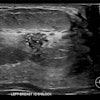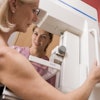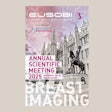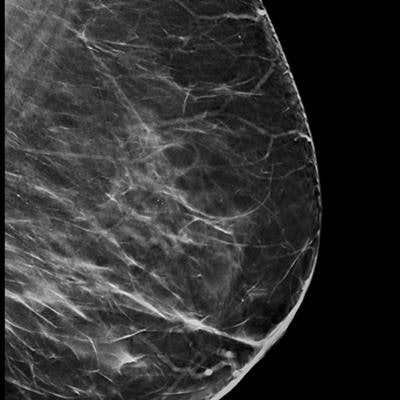
Using digital breast tomosynthesis (DBT) with synthesized 2D mammography increases cancer detection and reduces recall rates when compared with standard digital mammography alone, based on interim clinical trial results from Italy.
The study compared women screened using standard full-field digital mammography (FFDM) with women screened using DBT plus synthesized 2D mammography, which is a mammogram reconstructed from DBT data. The research team, led by Dr. Daniela Bernardi from the radiology department at U.O. Senologia Clinica & Screening Mammografico in Trento, found synthesized 2D mammography plus DBT increased the cancer detection rate by nearly four cancers per 1,000 screens and reduced the recall rate by 0.66%.
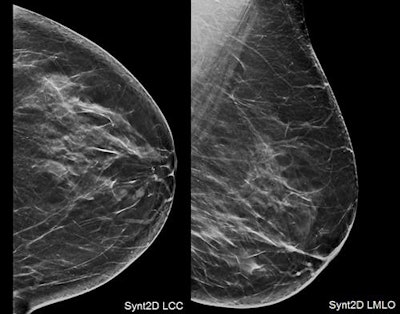 Top: Small, ill-defined mass identified scrolling through DBT slices. Bottom: DBT spot-compression views emphasized the tiny spiculations, increasing the level of suspicion (the lesion was classified BI-RADS 5 category). All images courtesy of Dr. Daniela Bernardi.
Top: Small, ill-defined mass identified scrolling through DBT slices. Bottom: DBT spot-compression views emphasized the tiny spiculations, increasing the level of suspicion (the lesion was classified BI-RADS 5 category). All images courtesy of Dr. Daniela Bernardi."Our results indicate that DBT screening improves screening-detection metrics," Bernardi told attendees at ECR 2018. "However, further research needs to assess health benefits."
The combination
Researchers continue to question whether DBT can replace standard mammography, and the current study is another log on the fire suggesting that yes, it can. At ECR 2018, Bernardi and colleagues presented interim results of their ongoing prospective trial on the use of DBT as a primary test instead of standard mammography.
For two screening rounds, all women who decided to participate in screening had a DBT mammogram. The primary end point of the trial was to collect all the results regarding the main screening parameters and compare them with those collected for a historical cohort of women who, two years before, had standard mammography, Bernardi said.
She and her team used historical cohort data of 20,815 women (after exclusions) who had FFDM for their screens. They compared this with 24,063 women (after exclusions) who had synthesized 2D mammography plus DBT for their screens. Clinicians double-blindly read the mammograms.
The researchers discovered a significant decrease in the recall rate and a significant increase in the cancer detection rate and the positive predictive value (PPV). Results are summarized in the table below.
| FFDM vs. DBT + synthesized 2D in Trento, Italy | ||||
| FFDM | Ratio per 1,000 screens | DBT + synthesized 2D | Ratio per 1,000 screens | |
| Detection rate | 119/20,815 | 5.72 | 233/24,063 | 9.68 |
| Recall rate | 712/20,815 | 3.42 | 664/24,063 | 2.76 |
| PPV | 119/712 | 16.71 | 233/664 | 35.09 |
The researchers also spotted more cancers for each size category in the first screening round, but the difference was not statistically significant. In the second screening round, DBT plus synthesized 2D detected more T1b (> 5 mm but ≤ 10 mm) and T1c (> 10 mm but ≤ 20 mm) lesions, which reached statistical significance: 2.74 and 3.49 versus FFDM's 1.44 and 2.31. In addition, for the T2 category (lesions measuring > 20 mm but ≤ 50 mm), DBT plus synthesized 2D yielded a detection ratio of 1.92 versus 0.64 for FFDM.
"Compared with [DBT trials] STORM and STORM2, for the first year, we measured a more relevant cancer detection rate; this is probably due to the prevalent effect of DBT used as a primary test all over the population," Bernardi told AuntMinnieEurope.com. "We're now collecting the data of the second round in DBT (checking the effect of DBT in the incident round)."
The researchers need to complete all the evaluations on the long-term effects of the use of DBT as a screening test before changing the protocols at their institution. In particular, they're evaluating the possible reduction of the interval carcinomas and/or the reduction of the large screen-detected cancers (T2+).
Looking ahead, using the data collected during the past four years, they'll do several evaluations with the purpose of contributing to the validation of the use of DBT in population-based screening programs, Bernardi said.

